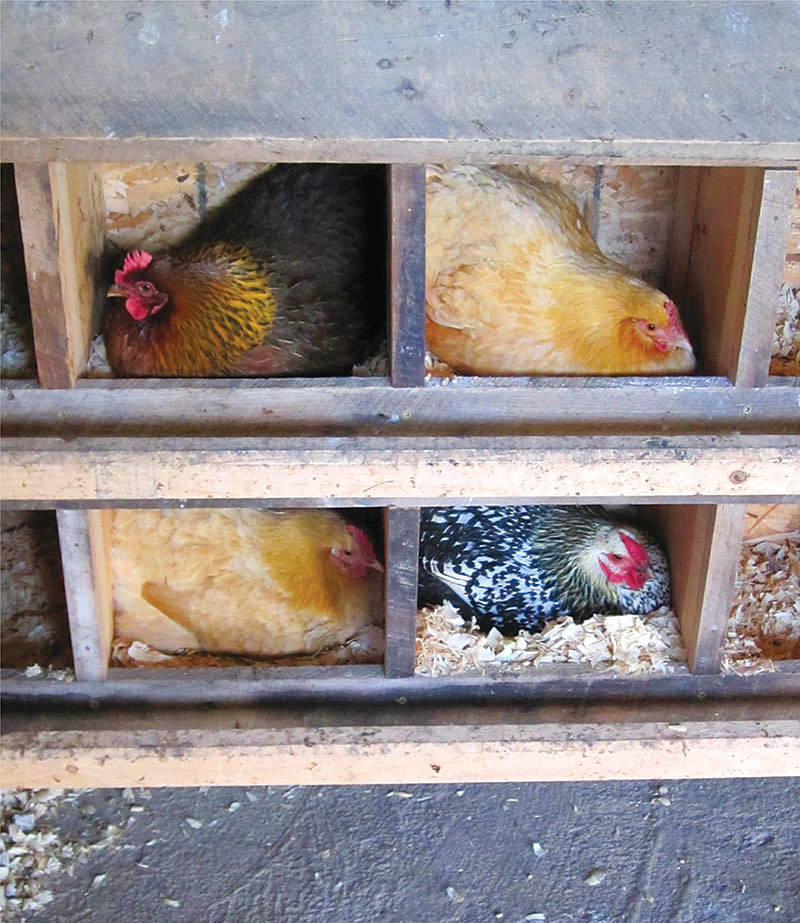
I warn people when I see them smiling into the brooder tanks of chicks at my local farm store: “Chickens are a gateway drug to farm life.”
It was chickens that got me hooked on that life 5 years ago when I founded Dickie Bird Farm. Since then, my farm has flourished. Today, the list of livestock includes chickens, turkey, game birds and goats. I also grow a half-acre of vegetables; tend a miniature orchard of fruit, berries and nuts; operate a goat micro-dairy; and make my own fresh chèvre and goat’s milk soap.
But before I get ahead of myself, let’s go back to where it all began: chickens.
Finding A Farm

My husband, Kipp, and I found our farm nestled in the hills of southern Ohio. The house wasn’t much to look at, but the big red barn was a beauty. It was built in the late 1800s from American chestnut timber, before blight wiped that native tree out of the northeastern U.S. and was crafted in traditional gambrel style with a two-level hayloft.
When we bought the place, the barn was empty but full of potential. Our first project was to convert a section of it into a chicken coop. We picked our chicks out of a mail-order catalog, and 25 Silver-Laced Wyandottes arrived two weeks later.
Wyandottes are reputed by many to be docile, cold-hardy and prolific at egg-laying. Our goal for raising poultry was self-sufficiency, and we thought dual-purpose SLWs would provide us with meat and eggs. The breed lived up to its reputation for laying a bounty of big, beautiful brown eggs, but we were disappointed in the meat.
Our first flock taught us that broiler breeds are superior meat birds, and that dual-purpose
birds are best used as stew birds and stock. Our second flock was a combination of Cornish Rocks for meat, and Welsummers, Buff Orpingtons and Australorps for eggs.
Growing The Farm

The following year, we raised turkeys for Thanksgiving and welcomed our first goats, and I began teaching backyard poultry classes to my community through the county extension office. I was excited and encouraged that half of class participants were, like me, millennials interested in growing and raising their own food. I had a lot of free-range experience to share, and I forged new friendships and made meaningful connections.

While it might sound like the perfect farm fairytale, it wasn’t. Like all beginning chicken keepers, I encountered many challenges raising poultry:
- One fall, coyotes took 30 percent of our flock.
- My chickens often left secret nests of 20-plus eggs in the hayloft to rot; I discovered them by smell.
- The first batch of game birds I was raising learned to fly before I had netting in place. We chased and captured 100 quail that had literally flew the coop. However, it was totally worth it, and we had major successes to celebrate, too.
- We bought an incubator and hatched our very own homegrown birds.
- We allowed some of our hens to sit on nests and lead their fluffy families out of the coop.
- Dark, rich, orange yolks are the norm now; we can’t stomach pale-yellow-yolked store-bought eggs.
Raising birds is a way of life at Dickie Bird Farm. “I will hobble out to collect eggs when I am 95, if it’s the only thing I can do!” I told my husband.
He laughed and said: “Good. I wouldn’t have my omelet any other way.”




